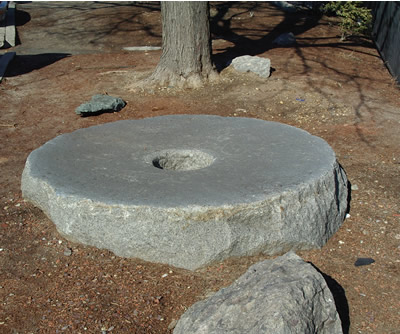Today as I made my lunch, I began craving French fries and, giving into temptation, I made my first visit to the Burger King about a block a way, the first time in my five years living in the neighborhood. I also took advantage of the whole in the parking lot fence for the first time, cutting across the adjacent parking lot to Allston Street. As walked the block toward Burger King, I was reminded of the mooring stone that resides on the edge of the parking lot. I took a picture of it a couple years ago while running the Roots program and I’ve been meaning to include it in the WhereProject for some time.

I made a mental note of it, but it wasn’t until I got back home that I realized that I didn’t remember actually looking at as I walked by–literally within feet of it. It could have been moved or painted pink, for all I know. So my perception of that stone today was entirely mediated by a digitized photograph I took two years ago and by the impulse to add it to this current website. Somewhere along the way, I forgot to actually see what was in front of me. I’ve seen also seen mooring stones these up at Halibut Point State Park. Historian Catherine A. Corman comments on these same stones in a Common-Place article:
The site was home to crusty New Englanders who employed
increasingly mechanized machinery to wrest granite–grainy,
hardened, molten magma made of quartz, feldspar, and hornblende–from
the ground. As early as the late seventeenth century, farmers and fisher
folk using iron hand tools crudely cut wheels of the stuff to serve as
mooring stones, slabs of rock combined with sturdy tree trunks that they
sunk in harbors to tie up boats.
But why is this thing in a Burger King parking lot and how did it get there? How would I even research this? Perhaps this would be a good excuse to go to the Brighton Historical Society.

Comments